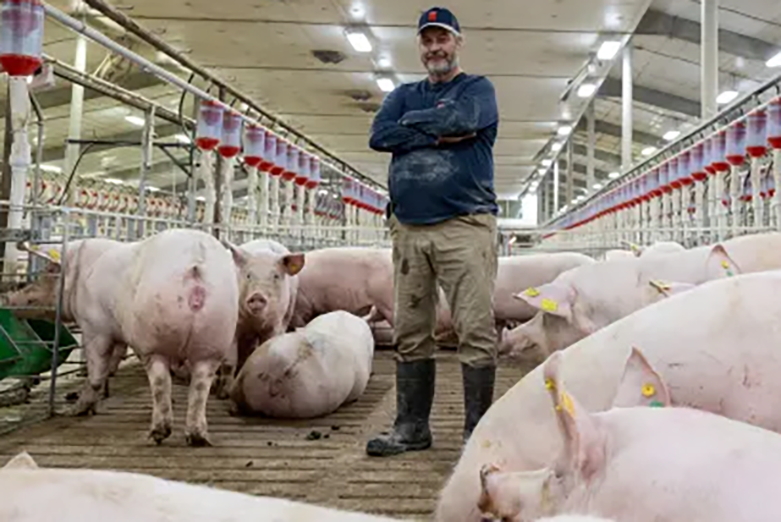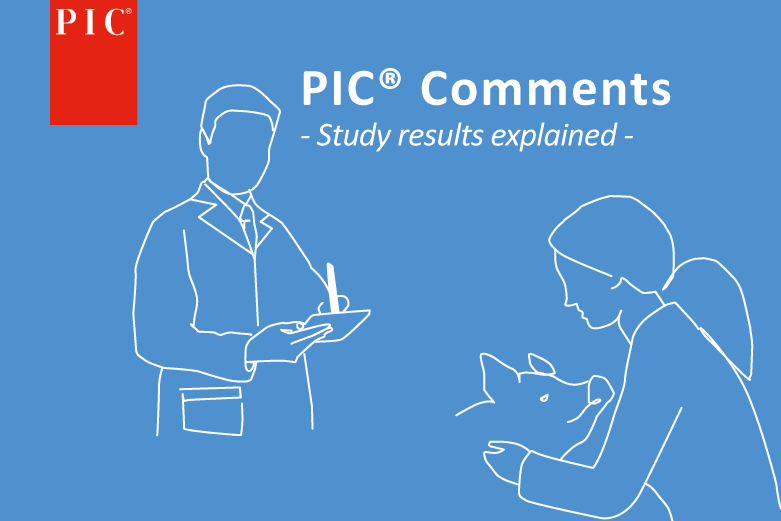Why it matters
In modern pig production, the journey toward sustainability, welfare, and profitability begins long before the sow farrows her first litter. It starts with gilt selection. Choosing the right female to enter the breeding herd is no longer just about reproductive output—it is a linchpin for long-term welfare, efficiency, and herd stability. And yet, in many operations, gilt selection remains inconsistent, rushed, or misaligned with production system demands.
PIC’s message is clear: With the right tools and insights, producers can build stronger herds, reduce losses, and enhance animal welfare—starting with the implementation of appropriate gilt selection standards.
What this means for producers
Poor gilt selection doesn’t just affect individual performance—it has system-wide implications:
1. Welfare risks and lost potential
Gilts with poor structure or unbalanced growth are more prone to lameness, injury, and culling. These animals struggle with mobility, access to feed, and maternal behavior. Welfare aside, the economic burden is significant—each replacement gilt lost prematurely represents wasted feed, time, and genetics.
Example: Lame gilts may consume up to 13% less feed, reducing growth and future litter sizes. Poorly structured sows show higher pre-weaning mortality due to piglet crushing, mastitis and udder issues related to inflammation often linked to painful standing or lying behavior.
2. Efficiency and longevity
Well-selected gilts reach maturity with efficient growth and higher probability to remain productive across multiple parities. In contrast, poorly selected females increase the need for replacements—raising feed costs and disrupting parity structure.
Data point: Reducing gilt replacement rates from 55% to 40% can improve herd feed conversion by up to 0.30 points, translating into lower cost per weaned pig.
3. Health, robustness, and biosecurity
Selection errors can lead to increased susceptibility to disease, congenital defects, or behaviour abnormalities. Gilts with underdeveloped vulvas, tipped-out structure, or abnormal leg angles face greater risk of reproductive disorders and lower resilience during group housing adaptation.
Example: Gilts raised under prenatal heat-stressed environments show reduced future performance and body regulation capacity. This underscores the importance of managing both genetic and environmental inputs from pre-birth onward.
4. System disruption from low selection leverage
When gilt supply is tight, producers may be forced to retain subpar females, compromising overall herd performance. High-leverage multiplication (aiming for at least 10% of total sow inventory) allows better selection pressure and higher-quality entry into the breeding herd.
Example: In some systems, farms shifting from 6% to 10% leverage increased rejection capability by 20–30% at selection age—without compromising gilt supply or herd targets. This enabled more consistent application of selection standards.
How innovation is redefining gilt selection
While body condition, teats, vulva shape, and leg conformation are still vital, new research confirms that these visible traits tell only part of the story. Today, thanks to scientific advances, producers can integrate deeper, more predictive metrics:
- Digital phenotyping tools now use artificial intelligence to objectively score leg structure and body symmetry.
- Behavioral monitoring systems track temperament and social adaptability, selecting calmer gilts less prone to piglet savaging or aggression in group housing.
- Having the right potential: Genomic selection boosts predictive accuracy by up to 30%, or even higher for complex traits like longevity, robustness, and reproductive success.
A new era where gilt selection is proactive, data-driven, and welfare-aligned.
Emerging technologies: From vision to practice
Innovations in trait definition and data collection are transforming what’s possible:
- AI-powered conformation scoring triples heritability of structural traits, enhancing selection consistency.
- Crossbred data integration helps genetically match purebred gilt performance with crossbred animals in commercial farm environments—not just nucleus farm conditions.
- Sensors and wearables now track movement, feed intake, and stress behaviors in real-time, feeding data directly into genetic programs.
These tools, combined with PIC’s structured training programs and mobile tools for barn-side use, allow producers to apply selection standards globally with unprecedented accuracy.
Conclusion:
Gilt selection as the foundation of welfare and success
The industry is at a turning point. As welfare standards rise and production systems become more complex, the price of poor gilt selection grows steeper. But with science, training, and digital innovation, producers have never been better equipped to breed and select the right gilts, at the right time, for the right system.
PIC’s role is not only to supply high-quality genetics—but to guide customers through the process of building resilient, welfare-aligned herds that thrive.
Never Stop Improving® begins with the first gilt.
References
- Calderón Díaz, J.A. et al. (2025). Welfare implications of poor gilt selection standards in commercial pig production systems. Animal Frontiers, 15(2):43–52.
- Patterson, J. & Foxcroft, G. (2019). Gilt management for improved sow lifetime productivity. Animals, 9(7):434.
- Foxcroft, G. (2005). Getting to 30 pigs/sow/year. London Swine Conference Proceedings.
- Smits, R.J. (2011). Impact of the sow on progeny productivity and herd feed efficiency. Recent Advances in Animal Nutrition – Australia.
- Knol, E.F., et al. (2016). Genomic selection in commercial pig breeding. Animal Frontiers, 6(1):15–22.
- PIC (2024). Internal Technical Briefs and Genetic Services Tools.



